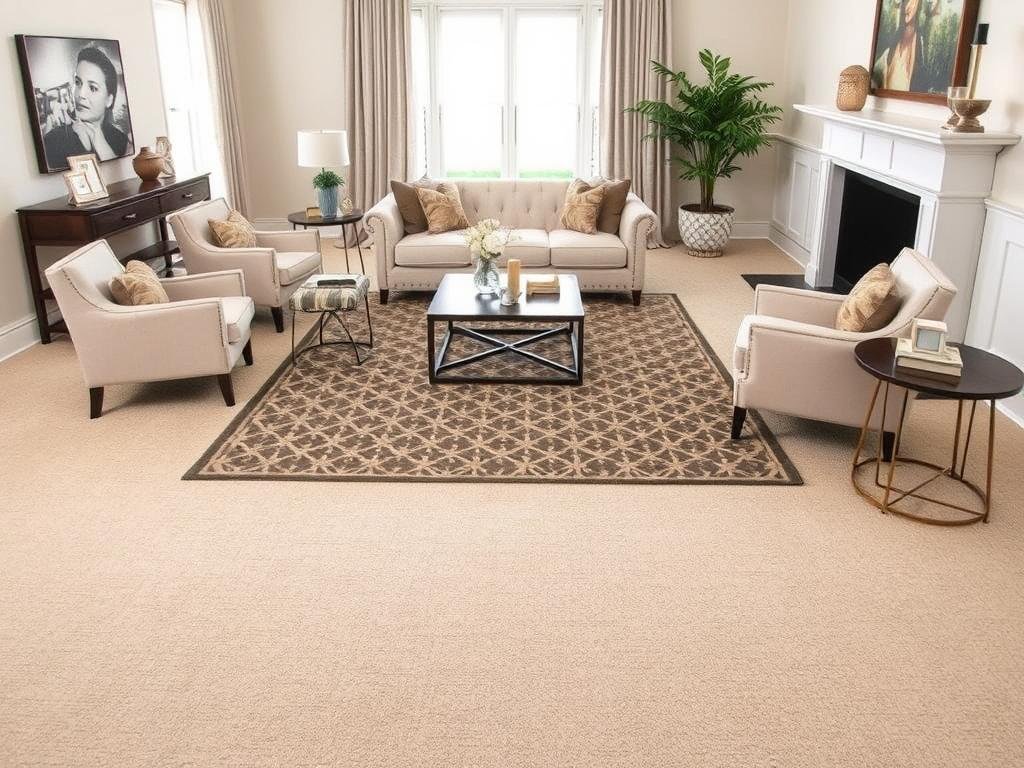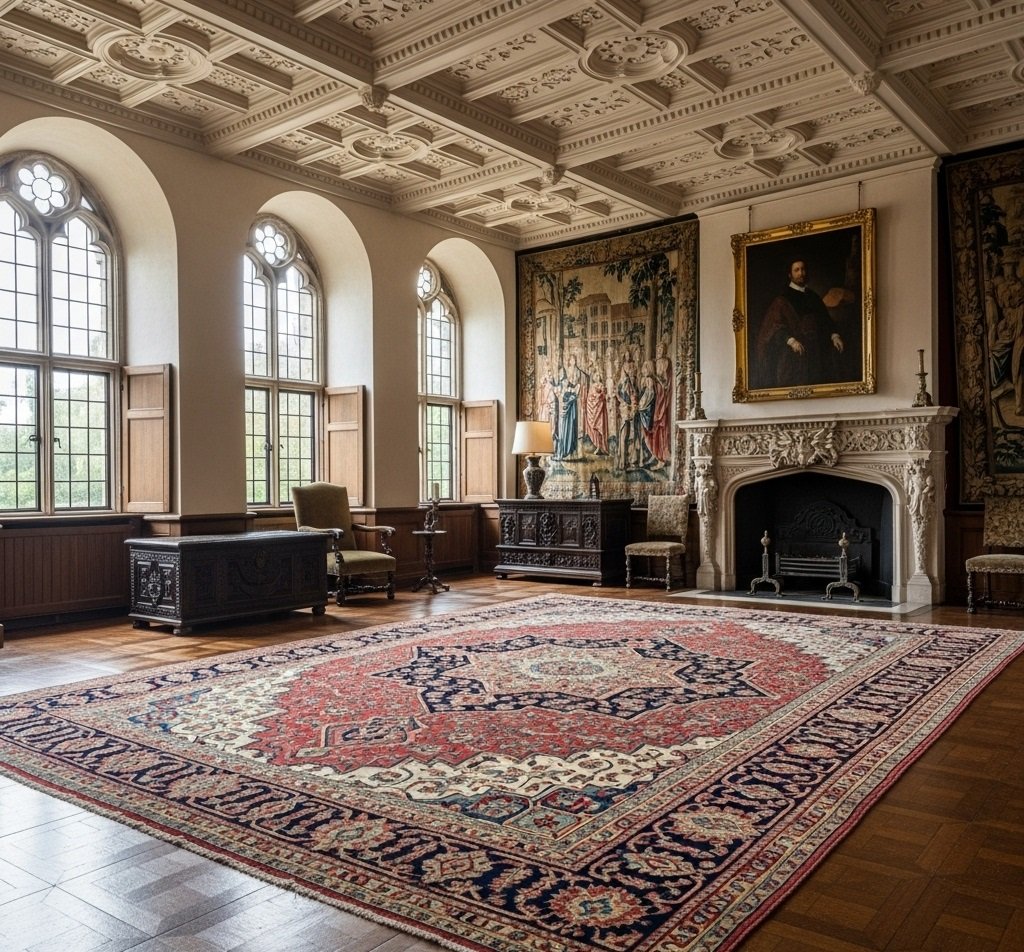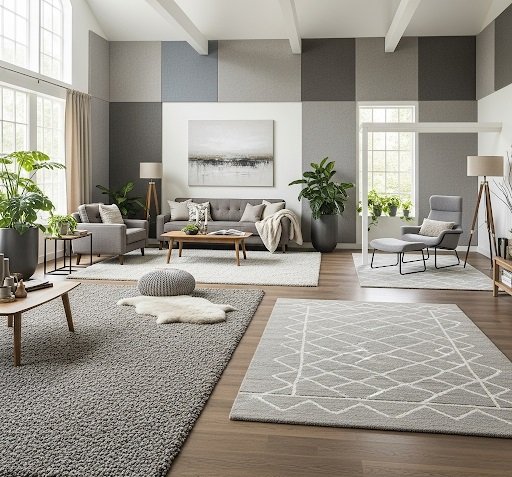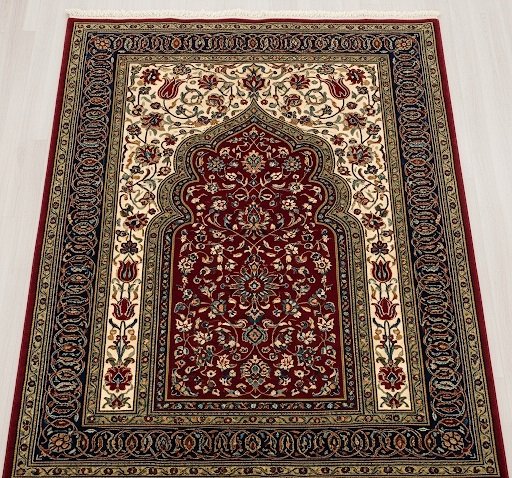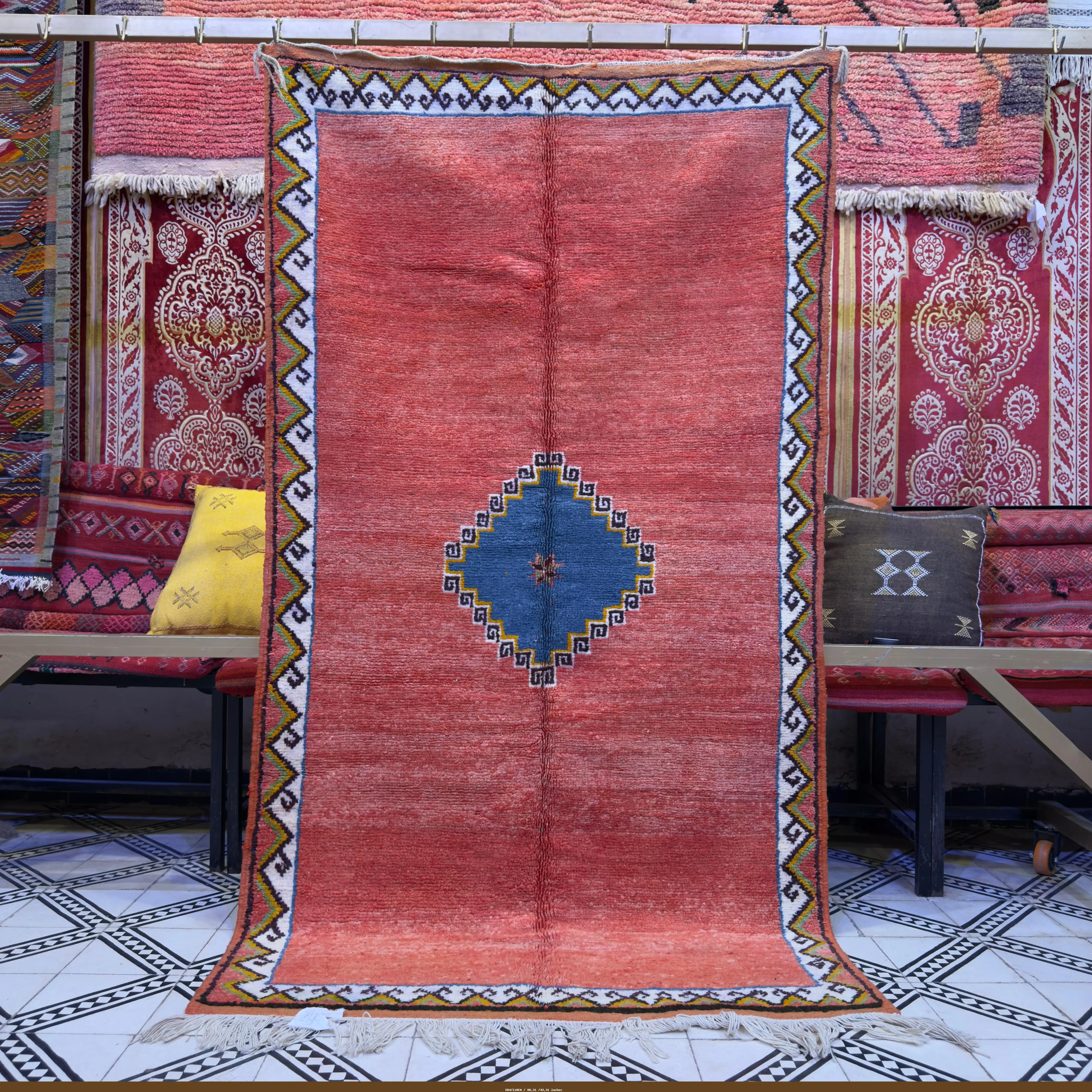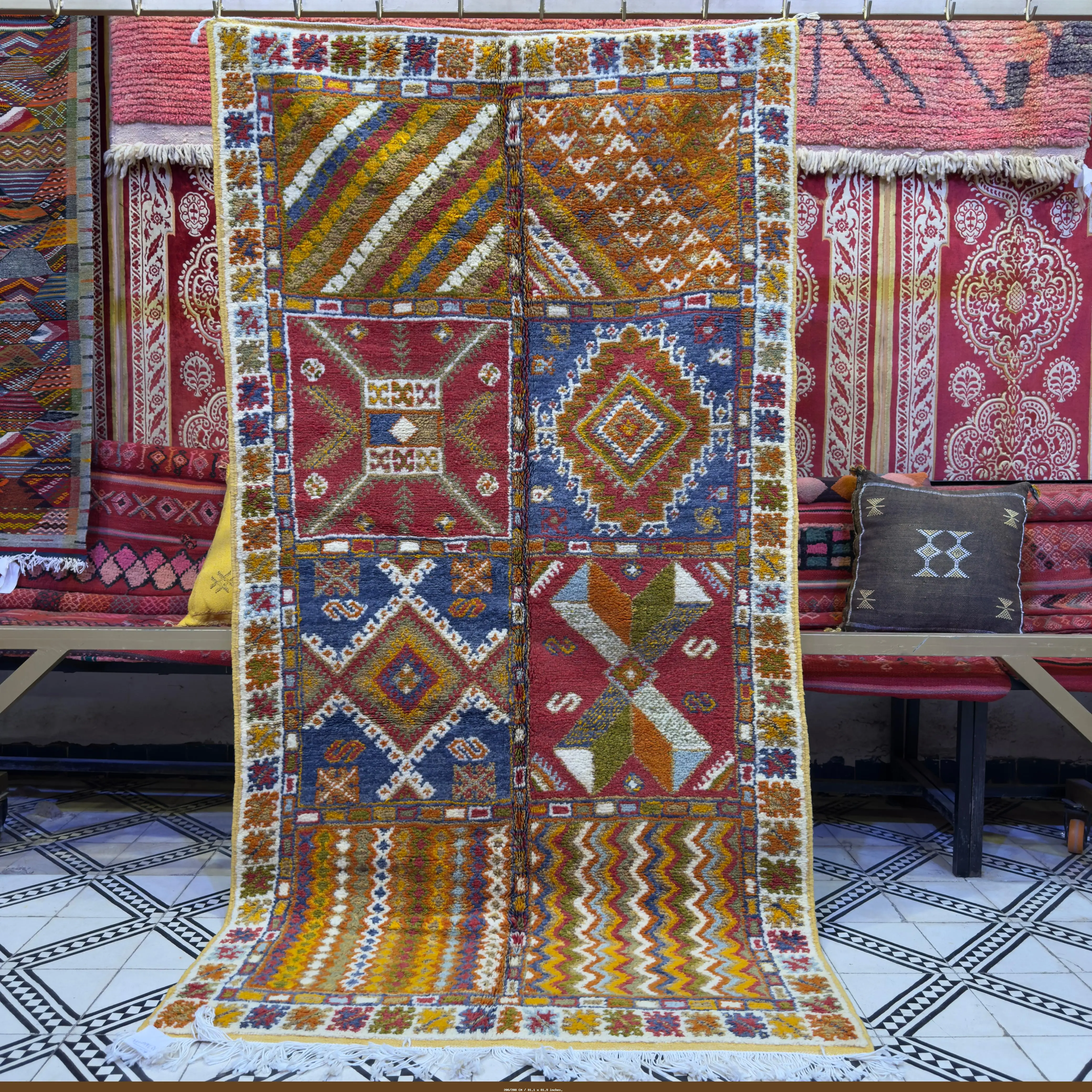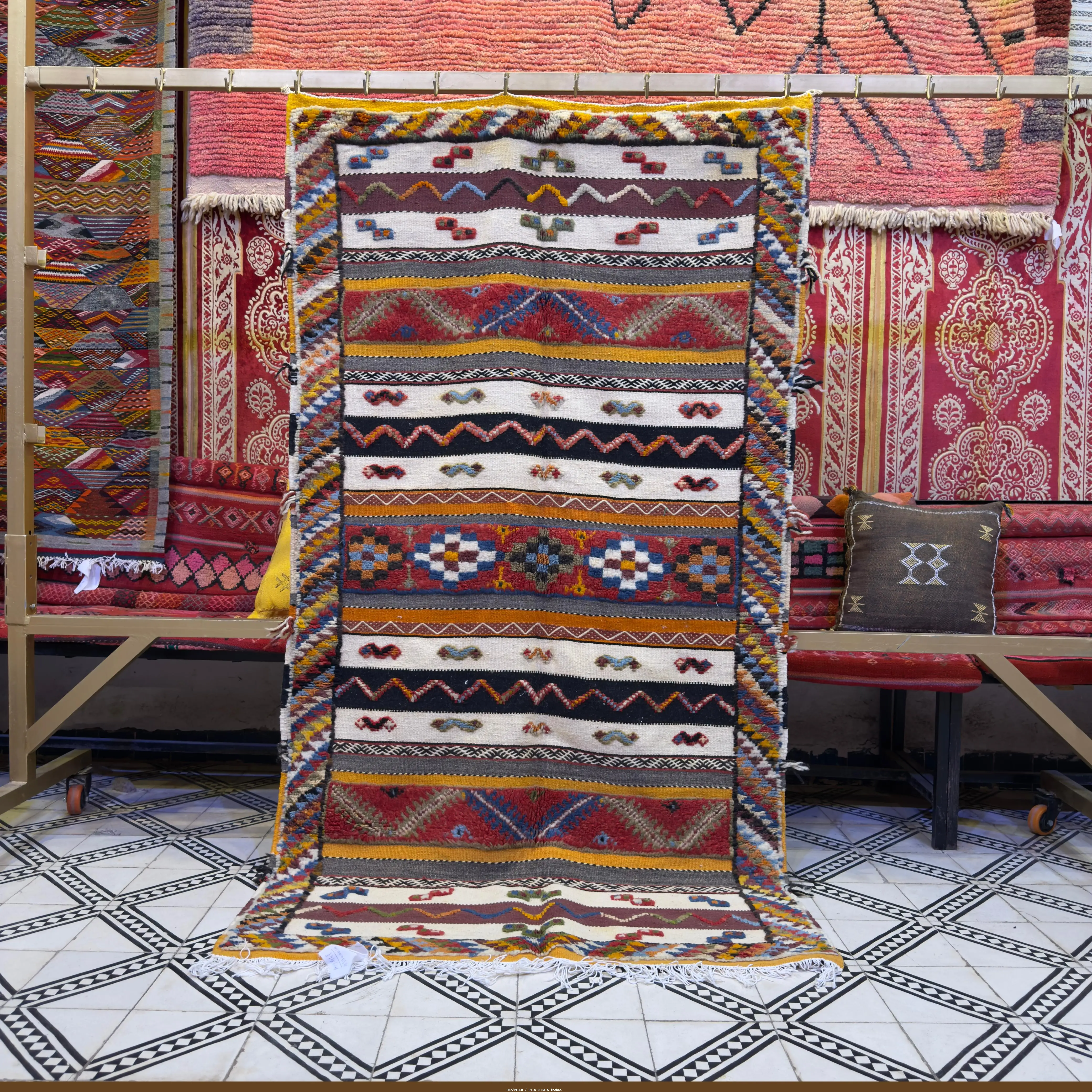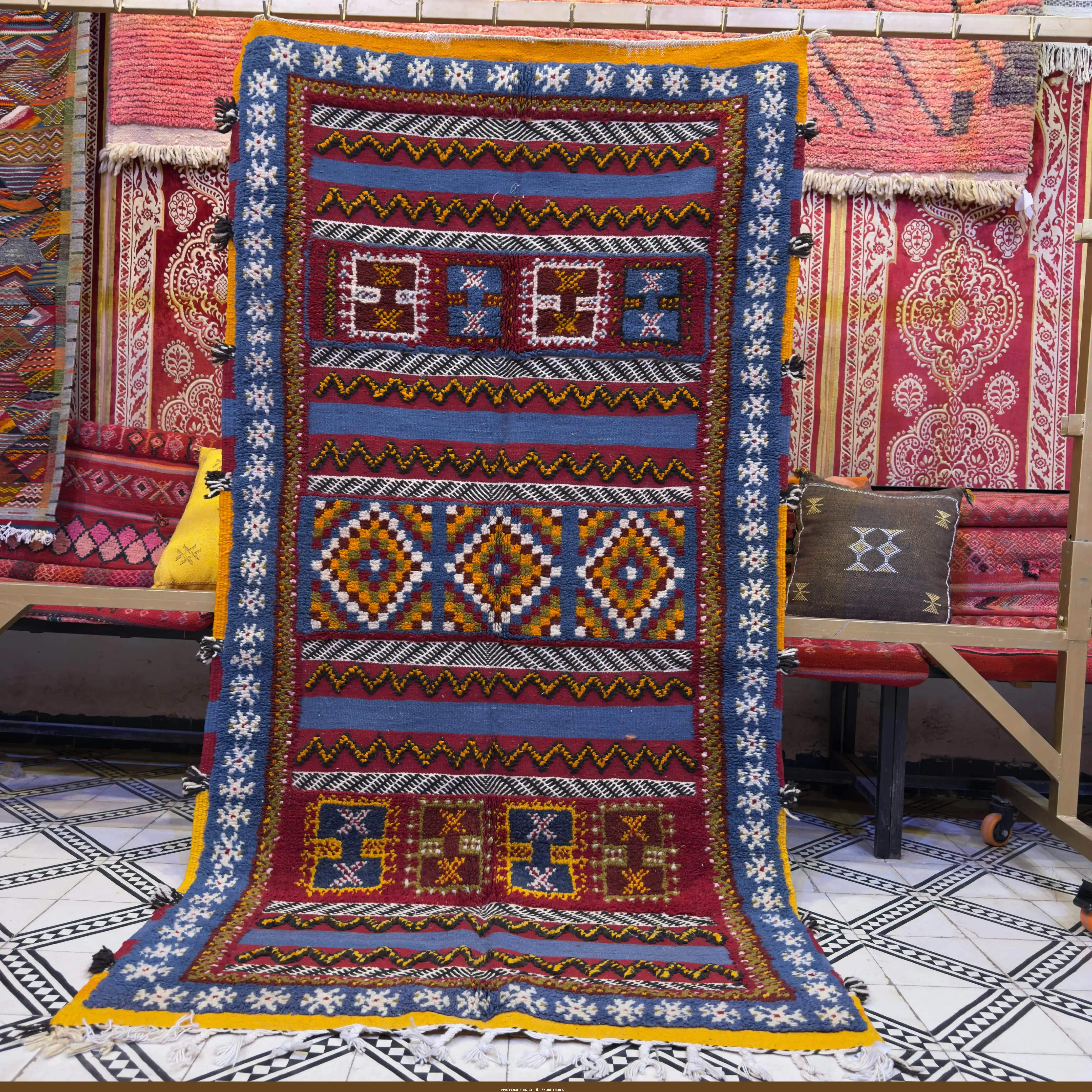How to Style & Secure a Rug on Carpet: Tips, Pads & Best Practices
Wondering if you can put a rug on carpet? The answer is a resounding yes! Layering area rugs over carpeting not only adds visual interest to your space but also helps define zones, protect high-traffic areas, and even hide stains or damage. This guide will walk you through everything you need to know about successfully styling and securing rugs on carpeted floors, from choosing the right rug pad to selecting complementary textures and patterns.
Benefits of Layering Rugs on Carpet
Before diving into the how-to, let's explore why placing a rug on carpet is worth considering for your home.
Enhanced Visual Appeal
Wall-to-wall carpeting often comes in neutral colors and basic textures. Adding an area rug introduces color, pattern, and texture that can transform the look of your room without the expense of replacing your carpet.
Define Spaces and Zones
In open floor plans or large rooms, area rugs help create distinct zones for different activities. A rug under your dining table or seating area visually separates these spaces from the rest of the room.
Protect High-Traffic Areas
Placing rugs in heavily used areas provides an extra layer of protection for your carpet, extending its lifespan and maintaining its appearance longer.
Hide Imperfections
If your carpet has stains, worn spots, or damage that can't be easily repaired, strategically placed area rugs can conceal these imperfections while adding style to your space.
5 Types of Rugs Ideal for Carpeted Floors
Not all rugs work equally well when placed on carpet. Here are five types that perform best in this layered arrangement:

1. Flatweave Rugs
These thin, tightly woven rugs have minimal pile height, making them less likely to bunch up on carpet. Their firm structure provides a stable surface that resists shifting and wrinkling.
Best for: Plush or medium-pile carpets where a thicker rug might sink or shift.

2. Natural Fiber Rugs
Wool, jute, sisal, and seagrass rugs offer excellent durability and tend to stay in place better than synthetic options. Their natural weight helps them remain stable on carpet.
Best for: Any carpet type, especially when you want to add organic texture to your space.

3. Patterned Low-Profile Rugs
Rugs with bold patterns and minimal thickness add visual interest without creating too much height difference between the rug and carpet.
Best for: Neutral, solid-colored carpets that need a design boost.

4. Indoor-Outdoor Rugs
These rugs are typically flat and durable with a tight weave that resists bunching. Their synthetic materials make them easy to clean and maintain when placed over carpet.
Best for: High-traffic areas and homes with children or pets.

5. Textured Rugs (for contrast)
When placed on low-pile carpet, high-pile or shag rugs create dramatic texture contrast. This pairing works because the firm, short carpet provides adequate support for the plush rug.
Best for: Low-pile or berber carpets where you want to add softness and luxury.
Texture Matching Tip
The key to successful rug layering is texture contrast. Pair low-pile carpets with plush rugs, or plush carpets with flatweave rugs. Avoid placing similar textures together, as they tend to slip against each other and create a visually muddled look.
6 Methods to Keep a Rug in Place on Carpet
The biggest challenge when placing a rug on carpet is preventing it from shifting, bunching, or creating tripping hazards. Here are six effective solutions:

1. Specialized Rug Pads
The most effective solution is a rug pad designed specifically for carpet-to-rug applications. These thin, slightly tacky pads grip both surfaces without damaging either one.
For thin, woven rugs on carpet, look for ultra-thin pads with a slightly tacky surface that prevents wrinkling and bunching.
| shop rug |
For plush area rugs, choose a thicker pad with rubber on one side and felt on the other. Place the rubber side against your rug and the felt side against your carpet.
Shop Plush Rug Pads2. Rug Tape
Double-sided carpet tape applied to the edges and corners of your rug can help prevent movement. This solution works well for smaller rugs or as a supplement to rug pads.
Look for removable carpet tape that won't damage your rug or leave residue on your carpet.
Shop Carpet Tape3. Rug Anchors
These small, discreet devices attach to the corners of your rug and help keep it flat and in place. They're particularly useful for rug corners that tend to curl up.
Rug anchors are easy to install and remove without damaging your rug or carpet.
Shop Rug Anchors
4. Strategic Furniture Placement
Position heavy furniture pieces so their legs rest on your rug. This natural anchoring method works well for larger rugs in living rooms and dining areas.
For best results, ensure at least the front legs of sofas and chairs are on the rug, or place all furniture legs on the rug for a more cohesive look.
5. DIY Silicone Caulk Method
For a budget-friendly solution, apply small dots of clear silicone caulk to the underside of your rug in a grid pattern. Once dry, this creates a non-slip surface that grips your carpet.
This method works best on rugs you don't plan to wash frequently, as the caulk will need to be reapplied after washing.
6. Rug Weights
For smaller rugs or mats, specially designed rug weights can be attached to the corners to prevent movement. These are particularly useful for lightweight rugs in low-traffic areas.
You can also make DIY weights using small bags filled with sand or beans sewn into the corners of your rug.
Comparing Rug Pads for Carpeted Floors
Choosing the right rug pad is crucial for keeping your area rug in place on carpet. Here's a comparison of the most effective options:
| Rug Pad Type | Best For | Thickness | Grip Level | Price Range | Durability |
| Ultra-Thin Tacky Pad | Thin, woven rugs on any carpet | 1/16" - 1/8" | High | $15-30 | 2-3 years |
| Felt & Rubber Hybrid | Plush rugs on low-pile carpet | 1/4" - 3/8" | Medium | $20-40 | 3-5 years |
| Mesh Grip Pad | All rug types on berber carpet | 1/8" | Medium-High | $10-25 | 1-2 years |
| Natural Rubber | Eco-friendly option for all rugs | 1/8" - 1/4" | High | $25-50 | 5+ years |
Pro Tip: Rug Pad Sizing
Always choose a rug pad that's 1-2 inches smaller than your area rug on all sides. This ensures the pad remains hidden while still providing maximum grip and stability.
Styling Tips: How to Make a Rug on Carpet Look Intentional

Consider Texture Contrast
The most successful rug-on-carpet combinations feature contrasting textures. Pair a plush, high-pile rug with low-pile carpet, or a flat-woven rug with plush carpeting. This deliberate contrast makes the layering look intentional rather than accidental.
Color Coordination
Choose a rug that either complements or deliberately contrasts with your carpet color. For a subtle look, select a rug with colors a few shades lighter or darker than your carpet. For a bolder statement, choose a rug with colors that contrast with your carpet but tie in with other elements in your room.
Size Matters
An area rug that's too small will look like a floating island on your carpet. For living rooms, ensure your rug is large enough for at least the front legs of all furniture to rest on it. In dining areas, the rug should extend at least 24 inches beyond all sides of the table.
Pattern Play
If your carpet is solid-colored, a patterned rug can add visual interest. Conversely, if your carpet has a pattern, opt for a solid-colored rug to avoid visual competition. The key is balance—one surface should be the star while the other plays a supporting role.

Proper Placement
In bedrooms, place your rug under the lower two-thirds of the bed, extending beyond the sides and foot. For living rooms, center the rug in your seating area with consistent borders of carpet showing around all sides.
Layer Multiple Rugs
For a truly designer look, consider layering multiple rugs. Start with a large, neutral rug on your carpet, then add a smaller, more colorful or patterned rug on top. This creates depth and allows you to incorporate more colors and textures into your space.
Ready to transform your carpeted space? Browse our selection of rugs specifically chosen to work well on carpet.
Shop Rugs for CarpetMaintenance and Care

Regular Cleaning
Vacuum both your area rug and the surrounding carpet regularly to prevent dirt buildup. For the most thorough cleaning, occasionally roll back your area rug to vacuum the carpet underneath and the back of the rug itself.
Preventing Discoloration
To prevent your carpet from developing uneven fading or discoloration under your rug, rotate your rug periodically and ensure both your rug and carpet are protected from direct sunlight when possible.
Addressing Spills
When spills occur on your area rug, clean them promptly to prevent the liquid from seeping through to your carpet. Place a folded towel between the rug and carpet while cleaning to absorb any moisture that might penetrate the rug.
Refreshing Your Rug Pad
Rug pads will eventually wear out and lose their grip. Plan to replace your rug pad every 1-5 years depending on the quality and the amount of foot traffic in the area.
Frequently Asked Questions
Can you put a carpet on top of another carpet?
Yes, you can place carpet on top of carpet, though it's typically more challenging than using an area rug. If you're considering this approach, opt for carpet tiles or remnants with a low pile height and use double-sided carpet tape to secure them. Keep in mind that this solution may be less stable than traditional area rugs designed for layering.
How do I prevent rug discoloration on carpets?
To prevent discoloration where your rug meets your carpet:
- Rotate your rug regularly (every 3-6 months)
- Use window treatments to block direct sunlight
- Choose rugs with colorfast dyes
- Avoid placing rugs with rubber backings directly on carpet, as they can cause yellowing
- Clean both your rug and carpet regularly to prevent dirt buildup at the edges
What are the best rug materials for high-traffic carpeted areas?
For high-traffic areas with carpet, choose rugs made from:
- Wool - naturally durable and soil-resistant
- Nylon - extremely durable and stain-resistant
- Polypropylene/Olefin - affordable, stain-resistant, and colorfast
- Sisal or jute - natural fibers that can withstand heavy use
- Indoor/outdoor rugs - specifically designed to handle wear and tear
Avoid delicate materials like silk or viscose in high-traffic areas, as they'll show wear quickly and are difficult to clean.
Will a rug damage my carpet?
When properly secured with an appropriate rug pad, an area rug will not damage your carpet. In fact, it can protect your carpet from wear in high-traffic areas. The only potential issues arise from:
- Rubber-backed rugs that may cause discoloration
- Dye transfer from low-quality rugs
- Moisture trapped between layers
Using a quality rug pad and ensuring both your rug and carpet stay dry will prevent these problems.
What's the best way to layer rugs of different sizes?
When layering multiple rugs:
- Start with a larger, neutral base rug
- Add a smaller, more decorative rug on top
- Ensure the top rug is at least 18 inches smaller than the base rug on all sides
- Secure both rugs with appropriate rug pads
- Position furniture to anchor the arrangement
This creates a designer look while adding visual interest and texture to your space.
Conclusion
Placing a rug on carpet is not only possible but can be a fantastic way to enhance your home's style, define spaces, and protect your existing flooring. With the right rug selection, proper securing methods, and thoughtful placement, you can create a layered look that adds depth, texture, and personality to any room.
Remember that contrast is key—whether in texture, color, or pattern—and proper securing is essential for both safety and aesthetics. By following the guidelines in this article, you'll be well-equipped to successfully incorporate area rugs into your carpeted spaces.
Ready to transform your carpeted space with a beautiful area rug? Start by finding the perfect rug pad to ensure your new look stays perfectly in place.
Shop Rug Pads for Carpet
